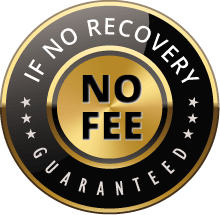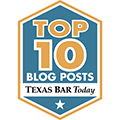
Don’t Wait Until the Storm Hits to Discover Coverage Gaps
Fall marks the transition from hurricane and hail season to the cold fronts and winter storms that close out the year. For commercial property owners, this is the most strategic time to perform a comprehensive insurance review. Many businesses discover only after a loss that their policy doesn’t fully cover wind, hail, or flood damage—or that their building valuations are far below current replacement costs.
Conducting a policy review now ensures that your coverage reflects your true risk exposure before year-end storms arrive. The Voss Law Firm regularly helps property owners evaluate insurance policies and pursue fair compensation after severe weather events. Here’s what to look for when reviewing your coverage this season.
1. Review Core Property Coverages and Limits
Your commercial property policy should include protection against direct physical loss caused by perils such as wind, hail, fire, and water. Check whether your policy is “all-risk” (broader protection) or “named-peril” (limited to specified events).
Most importantly, verify that coverage limits align with current replacement costs. Inflation, labor shortages, and rising material prices have significantly increased rebuilding expenses over the last several years. If your coverage limits haven’t been updated recently, you could face a co-insurance penalty or out-of-pocket rebuilding costs after a loss.
2. Identify Exclusions That May Affect Weather-Related Claims
Common exclusions that surprise property owners include:
● Surface water or flood damage not covered unless you carry separate flood insurance.
● Wear and tear, deterioration, or neglect, which insurers may use to deny claims after storms.
● Wind-driven rain entering through an unsealed opening, sometimes excluded as “maintenance-related.”
● Hail and wind deductibles, which can be much higher than your base deductible and
are often percentage-based.Have your attorney or broker review these exclusions with you so you understand how they may apply to your property’s specific risks.
3. Evaluate Business Interruption and Extra Expense Coverage
When a storm damages your property, the physical repairs are only part of the cost. Business interruption insurance can compensate you for lost income and ongoing expenses while your operations are suspended.
Review:
● The period of restoration—how long coverage applies.
● Whether utility service interruption or ingress/egress coverage is included.
● If you have contingent business interruption protection for losses caused by damage to key suppliers or nearby infrastructure.
Document your business’s financials now to make it easier to prove lost revenue later.
4. Reassess Deductibles and Policy Endorsements
Higher deductibles can reduce premiums but may expose you to unexpected costs after a loss. Review percentage deductibles for wind, hail, or named storms, which are often applied per occurrence, not per policy year.
Consider endorsements that could enhance protection, such as:
● Ordinance or law coverage for code-required upgrades.
● Equipment breakdown for HVAC or electrical systems.
● Debris removal and pollutant cleanup coverage.
5. Confirm Policyholder Obligations and Reporting Deadlines
Every commercial insurance policy includes obligations for the insured, such as prompt notice of loss and mitigation requirements. Failure to meet these conditions can give insurers grounds to delay or deny claims.
Know your deadlines now—before an emergency. Maintain an emergency response plan that details how to document damage, contact your insurer, and secure the property after a storm.
6. Review Sub-Limits for Key Coverages
Some coverages, like mold remediation, debris removal, or code upgrades, are subject to sub-limits—caps that apply even if your total policy limit is higher. Review these carefully, as they often fall short of actual costs.
7. Document Your Property’s Condition Before the Next Storm
Photograph and video record your roof, mechanical systems, and exteriors before the end of fall. Keep dated records of recent maintenance and repairs. These materials help establish the pre-loss condition of your property and prevent insurers from alleging “pre-existing damage.”
8. Schedule an Annual Insurance Audit
An annual audit with your risk manager or attorney helps keep coverage current with property expansions, renovations, or equipment upgrades. Treat your policy like any other business asset—it should evolve with your operations.
The Right Coverage Is Your First Line of Defense
A thorough fall policy review ensures that when winter storms or late-season hurricanes strike, your commercial property is fully protected. If you discover gaps or your insurer disputes coverage after a loss, The Voss Law Firm can help. Our attorneys represent commercial policyholders nationwide, ensuring they receive the full value of their insurance protection.
Contact The Voss Law Firm today for a policy review or consultation regarding your storm damage coverage.



















